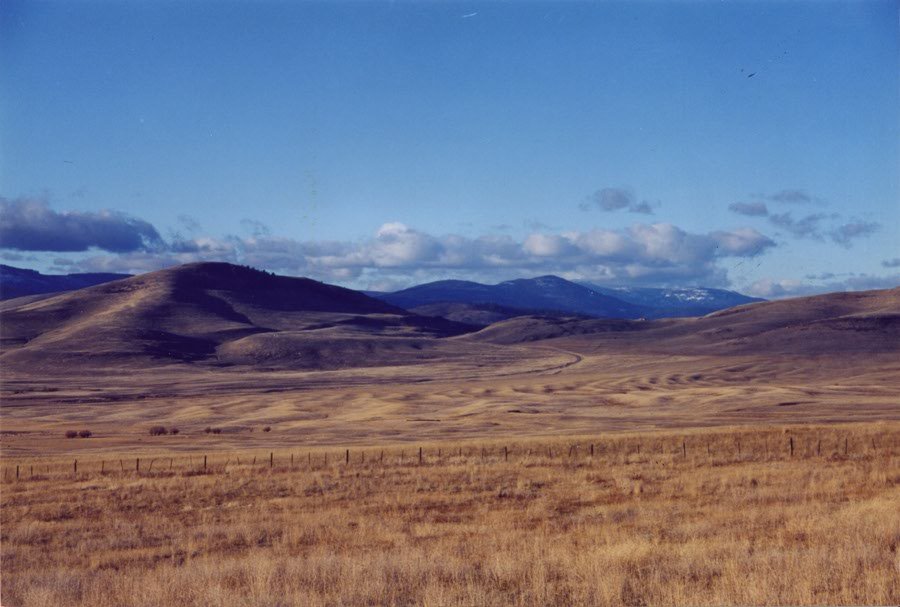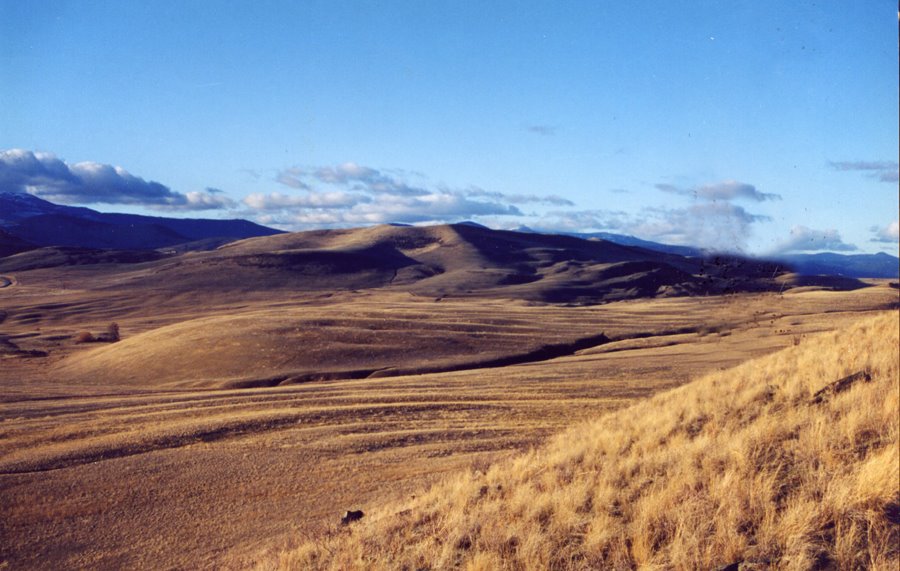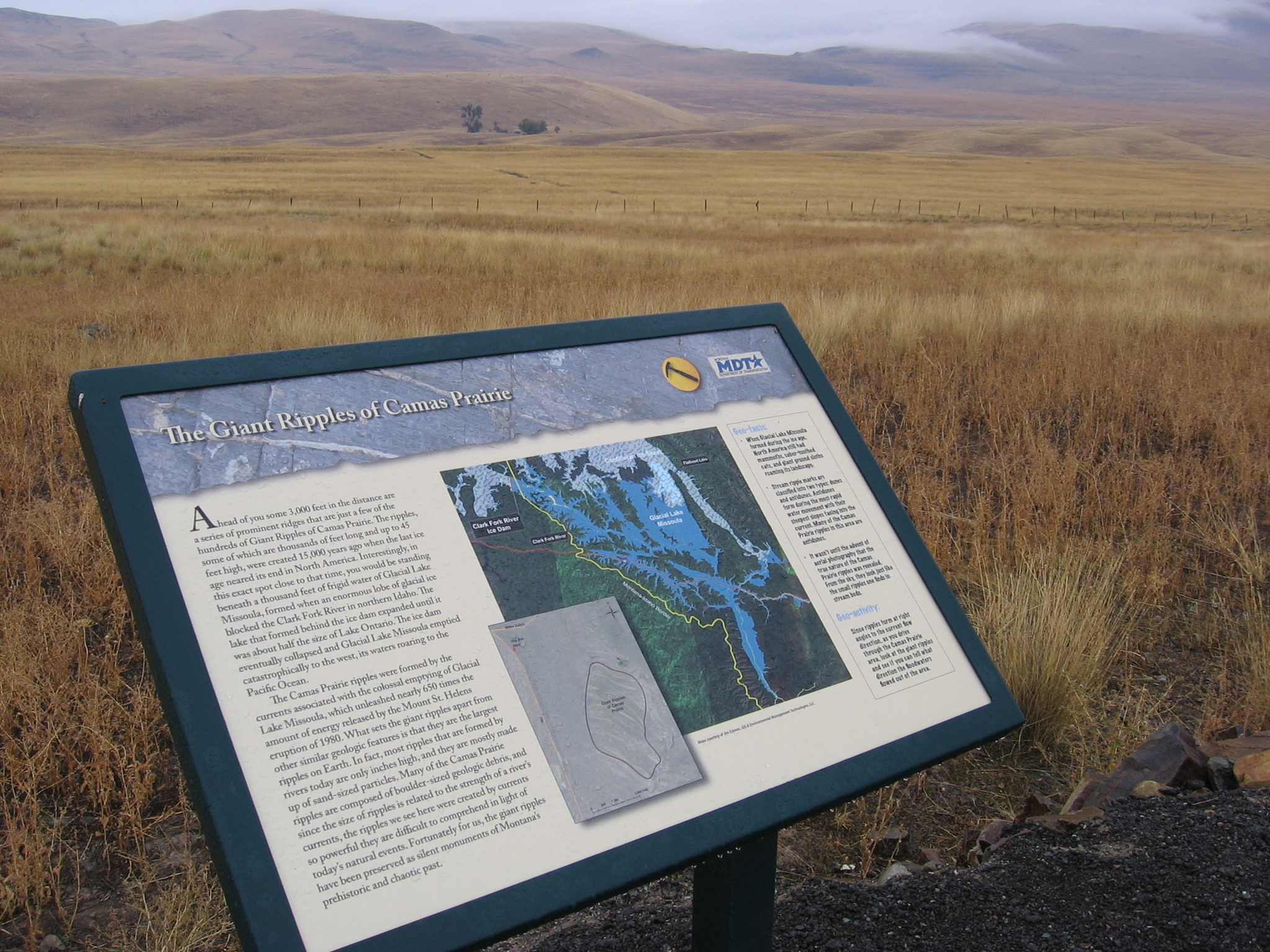 Flathead Land Trust’s largest conservation easement protects 3,867 acres of the Camas Prairie near Hot Springs and includes giant ripples from the strong currents that formed with the emptying of Glacial Lake Missoula 15,000 years ago. These giant ripples are prominent ridges, some 45 feet high and thousands of feet long – the largest ripples on earth. Most ripples that are formed by rivers today are only inches high and are mostly made up of sand-sized particles. Many of the Camas Prairie ripples are composed of boulder-sized geologic debris, and since the size of ripples is related to the strength of a river’s currents, these ripples were created by currents so powerful they are difficult to comprehend.
Flathead Land Trust’s largest conservation easement protects 3,867 acres of the Camas Prairie near Hot Springs and includes giant ripples from the strong currents that formed with the emptying of Glacial Lake Missoula 15,000 years ago. These giant ripples are prominent ridges, some 45 feet high and thousands of feet long – the largest ripples on earth. Most ripples that are formed by rivers today are only inches high and are mostly made up of sand-sized particles. Many of the Camas Prairie ripples are composed of boulder-sized geologic debris, and since the size of ripples is related to the strength of a river’s currents, these ripples were created by currents so powerful they are difficult to comprehend.

Glacial Lake Missoula was formed when an enormous lobe of glacial ice blocked the Clark Fork River in northern Idaho during the Ice Age, when mammoths, saber-toothed cats, and giant ground sloths still roamed the landscape. The lake that formed behind the ice dam expanded until it was 3,000 square miles, held 500 cubic miles of water, and was 2,000 feet deep – as big as Lakes Erie and Ontario combined. The ice dam eventually collapsed and Glacial Lake Missoula emptied catastrophically to the west, its waters moving at maximum speeds of 80 miles per hour roared to the Pacific Ocean. The flood waters ran with the force equal to 60 Amazon Rivers and moved car-sized boulders embedded in ice up to 500 miles. The Camas Prairie ripples were formed by the mighty currents associated with the colossal emptying of Glacial Lake Missoula. Glacial Lake Missoula filled and emptied about 40 times during a 2,000 year period.
The rolling grasslands of the Camaroot Ranch were first homesteaded in 1910, the year the Flathead Indian Reservation was first open to land acquisition. The Cross family’s ownership began in 1920 when Sid Cross’s grandparents, John and Anna Lauraman, first acquired 160 acres. They and other relatives continued to acquire surrounding land over the next several decades. At one time the ranch totaled almost 6,000 acres. Parts of three homesteads still remain on the property including a 2-story house and old barn that was built in the 1920s where Anna Lauraman grew up. The ranch was used for grazing cows and horses, and raising some crops such as alfalfa and wheat. The Cross family sold the property to the Confederated Salish and Kootenai Tribe in 2015.
The conservation easement on this unique property preserves open space, agricultural land, and the giant ripples as silent monuments of Montana’s prehistoric and chaotic past.




